
Overview
The education and research industry encompasses a wide range of institutions and organizations dedicated to the advancement of knowledge and the dissemination of information. In education, this includes schools, colleges, universities, and online learning platforms that provide formal instruction and training across various subjects and disciplines. Research institutions, on the other hand, focus on generating new knowledge through scientific investigation, experimentation, and scholarly inquiry. These can include universities, government research laboratories, think tanks, and private research firms. Both sectors work in tandem to drive innovation, foster intellectual growth, and address societal challenges through learning and discovery.
Depending on specific features and functions, GAO Tek’s Nitrogen dioxide gas detectors are sometimes referred to as NO2 monitors, nitrogen dioxide sensors, NO2 detectors, nitrogen dioxide analyzers, NO2 gas alarms, Nitrogen dioxide meters, NO2 sniffers, nitrogen dioxide testers and NO2 sensing devices.
Furthermore, GAO Tek’s nitrogen dioxide gas detectors are further grouped into:
Alarm-enabled, Benchtop, Sensor-based, Data logging, Explosion-proof, Handheld, High precision, Laser-based, Outdoor, Rugged and Wireless.GAO Tek’s nitrogen dioxide gas detectors have the following applications in the education and research industry:
- Safety Monitoring: In educational institutions and research facilities where experiments involving chemicals are conducted, GAO Tek’s nitrogen dioxide gas detectors play a crucial role in ensuring the safety of students, researchers, and staff. These detectors can quickly identify the presence of nitrogen dioxide, a common byproduct of chemical reactions, and alert individuals to potential hazards.
- Indoor Air Quality (IAQ) Assessments: Maintaining good indoor air quality is essential for creating conducive learning and research environments. GAO Tek’s nitrogen dioxide gas detectors help in monitoring IAQ, especially in laboratories where chemical fumes may be present. Continuous monitoring ensures that air quality standards are met, safeguarding the health and well-being of occupants.
- Environmental Research: Researchers in the education and research industry often study air pollution and its impact on human health and the environment.GAO Tek’s nitrogen dioxide gas detectors are valuable tools for measuring ambient levels of NO2 in outdoor air as well as in indoor environments. This data aids in understanding pollution patterns, assessing exposure risks, and developing strategies for mitigation and adaptation.
- Chemical Experiments and Studies: In educational laboratories and research facilities, GAO Tek’s nitrogen dioxide gas detectors are used during chemical experiments and studies involving nitrogen-containing compounds. These detectors provide real-time monitoring of NO2 levels, allowing researchers to accurately measure gas emissions, study reaction kinetics, and evaluate the effectiveness of ventilation systems.
- Compliance Monitoring: Educational institutions and research organizations are often required to adhere to safety regulations and standards set forth by regulatory bodies. GAO Tek’s nitrogen dioxide gas detectors help in ensuring compliance with these regulations by continuously monitoring NO2 levels and providing documentation of air quality data for regulatory purposes.
- Instrument Calibration and Validation: GAO Tek’s nitrogen dioxide gas detectors themselves require periodic calibration and validation to maintain accuracy and reliability. Educational institutions and research facilities may use these detectors as part of their calibration procedures to ensure that other analytical instruments, such as spectrometers and chromatographs, are operating correctly.
More information on nitrogen dioxide gas detectors and their applications in other industries can be found on
Nitrogen Dioxide Gas Detectors.
This category page lists related products
Systems in Education and Research Industry Utilizing Nitrogen Dioxide Gas Detectors
Here are some popular systems in the education and research industry using nitrogen dioxide gas detectors:
Laboratory Safety Monitoring System:
- Nitrogen Dioxide Gas Detectors: Integrated into laboratory safety systems to continuously monitor NO2 levels.
- LabVIEW (by National Instruments): LabVIEW provides a platform for data acquisition and analysis. It can be utilized to interface with nitrogen dioxide gas detectors, collect real-time data, and trigger alerts in case of hazardous NO2 concentrations.
- MATLAB/Simulink: MATLAB/Simulink offers advanced data processing capabilities. It can be used to analyze trends in NO2 concentrations, develop predictive models for air quality, and optimize ventilation systems in research laboratories.
Indoor Air Quality Management System:
- NO2 Gas Sensors: Deployed throughout educational and research facilities to monitor indoor air quality.
- Air Quality Monitoring Software: This software is specifically designed for monitoring indoor air quality parameters, including NO2 levels. It provides real-time data visualization, historical trend analysis, and customizable alert notifications to ensure optimal indoor air quality.
- EPA Air Quality System (AQS): AQS is a comprehensive database and software tool provided by the Environmental Protection Agency (EPA). It can be utilized to manage and analyze air quality data collected from nitrogen dioxide gas detectors, aiding in regulatory compliance and environmental research.
Chemical Laboratory Ventilation Control System:
- NO2 Detectors: Installed in chemical laboratories to monitor NO2 emissions from experiments.
- LabSense : LabSense is a laboratory management software solution that integrates with nitrogen dioxide gas detectors to control ventilation systems based on real-time NO2 measurements. It optimizes airflow to maintain safe working conditions and minimize exposure risks.
- LabWare LIMS (Laboratory Information Management System): LabWare LIMS is a comprehensive software platform for managing laboratory workflows and data. It can be configured to include modules for monitoring and recording NO2 levels from detectors, ensuring compliance with safety regulations, and facilitating data traceability in research laboratories.
Environmental Research Monitoring Network:
- NO2 Monitoring Stations: Distributed across research sites to monitor ambient NO2 levels.
- ArcGIS by Esri: ArcGIS is a geographic information system (GIS) software used for spatial analysis and mapping. It can integrate data from nitrogen dioxide gas detectors to create interactive maps visualizing NO2 concentrations, aiding in environmental research and pollution monitoring.
- R Studio: R Studio is an open-source programming environment for statistical computing and graphics. Researchers can utilize R Studio to analyze NO2 data collected from monitoring stations, perform statistical tests, and generate visualizations for scientific publications and reports.
Occupational Health And Safety Management System:
- Personal NO2 Monitors: Worn by researchers and laboratory personnel to monitor personal exposure to NO2.
- SafetyCulture iAuditor: iAuditor is a mobile inspection app used for conducting safety audits and inspections. It can be configured to include checklists for NO2 exposure monitoring using personal detectors, ensuring compliance with occupational health and safety regulations in research environments.
- SAP Environment, Health, and Safety (SAP EHS): SAP EHS is an integrated software suite for managing environmental, health, and safety processes. It can include modules for tracking and analyzing NO2 exposure data collected from personal monitors and facilitating risk assessment and mitigation strategies in educational and research settings.
GAO Tek’s targeted markets are North America, particularly the U.S., and Canada.
Complying with Government Regulations
GAO Tek’s nitrogen dioxide gas detectors comply or help our customers comply with U.S. government regulations such as
- Occupational Safety and Health Administration (OSHA) Standards
- Environmental Protection Agency (EPA) Regulations
- Chemical Hygiene Plan (CHP) Requirements
- Fire Code (FC) Regulations
- Federal Grants and Funding (FGF) Requirements
- National Ambient Air Quality Standards (NAAQS)
- American National Standards Institute (ANSI) Standards
- National Institute for Occupational Safety and Health (NIOSH) Guidelines
- Department of Transportation (DOT) Regulations for Transporting Hazardous Materials
- National Fire Protection Association (NFPA) Codes and Standards
GAO Tek’s nitrogen dioxide gas detectors comply or help our clients comply with Canadian regulations such as
- Canadian Environmental Protection Act (CEPA)
- Workplace Hazardous Materials Information System (WHMIS)
- Canadian Centre for Occupational Health and Safety (CCOHS) Guidelines
- Canadian Standards Association (CSA) Standards
- Canadian Environmental Quality Guidelines (CEQGs)
- Natural Sciences and Engineering Research Council of Canada (NSERC) Guidelines
- Public Health Agency of Canada (PHAC) Guidelines
- Canadian Council on Animal Care (CCAC) Standards
- Canadian Ambient Air Quality Standards (CAAQS)
- Canadian Environmental Assessment Act (CEAA)
- Canadian Environmental Quality Guidelines (CEQGs)
Case Studies of Nitrogen Dioxide Gas Detectors in Education and Research Industry
Nitrogen dioxide gas detectors are sometimes called NO2 monitors, nitrogen dioxide sensors, NO2 detectors, nitrogen dioxide analyzers, NO2 gas alarms, nitrogen dioxide meters, NO2 sniffers, nitrogen dioxide testers, and NO2 sensing devices.
Here are some practical examples of using nitrogen dioxide gas detectors in the education and research industry:
A prominent university in the Northeast implemented a comprehensive safety enhancement program in its chemistry laboratories. As part of this initiative, nitrogen dioxide gas detectors were installed throughout the laboratories to monitor NO2 levels during experiments. The detectors, integrated with LabVIEW software, provided real-time data to researchers and safety personnel, allowing for proactive intervention in case of hazardous NO2 concentrations.
A research facility in the Northeast focused on environmental sciences recognized the importance of maintaining optimal indoor air quality (IAQ) for both research integrity and occupant health. They deployed nitrogen dioxide gas detectors in various laboratory spaces to continuously monitor NO2 levels. Using Air Quality Monitoring Software, facility managers were able to track IAQ metrics, identify potential sources of NO2 emissions, and implement corrective measures to ensure a safe and healthy work environment.
A leading university in the Midwest region upgraded its chemistry laboratories to enhance safety measures for students and faculty. Nitrogen dioxide gas detectors were installed in key laboratory areas to monitor NO2 levels during experiments involving chemical reactions. The integration of LabVIEW software allowed real-time monitoring of air quality, ensuring compliance with safety standards and facilitating prompt response to any potential hazards.
An agricultural research facility in the Midwest utilized nitrogen dioxide gas detectors to monitor indoor air quality in livestock housing and agricultural production areas. Air Quality Monitoring Software was employed to track NO2 levels and identify potential sources of emissions. The data collected aided researchers in assessing the impact of agricultural activities on air quality and implementing measures to mitigate environmental pollution.
A prominent biomedical research institute in the South implemented enhanced safety measures in its laboratories. Nitrogen dioxide gas detectors were installed to monitor NO2 levels during experiments involving chemical reactions. Integrated with LabVIEW software, real-time monitoring allowed researchers to ensure safe working conditions and comply with OSHA regulations, thereby enhancing laboratory safety protocols.
A coastal research facility in the South utilized nitrogen dioxide gas detectors to assess the environmental impact of industrial activities on air quality. Deployed in key monitoring locations, the detectors provided data on NO2 concentrations. Using ArcGIS software, researchers mapped out spatial variations in NO2 levels, correlating them with industrial emissions and coastal development, contributing valuable insights to environmental management and policy-making.
An environmental research center in the West utilized nitrogen dioxide gas detectors to monitor indoor and outdoor air quality. Deployed in laboratories and field research sites, the detectors provided data on NO2 concentrations. Leveraging ArcGIS software, researchers analyzed spatial patterns of NO2 levels, identifying hotspots of pollution and informing mitigation strategies to protect ecosystems and public health.
A research project focused on sustainable building design in the West prioritized indoor air quality management. Nitrogen dioxide gas detectors were integrated into ventilation systems of energy-efficient buildings to monitor NO2 emissions. Air Quality Monitoring Software facilitated continuous monitoring and data analysis, enabling researchers to optimize indoor air quality while minimizing energy consumption, contributing to sustainable building practices.
A leading Canadian university upgraded its laboratory safety measures to ensure a safer working environment for students and researchers. Nitrogen dioxide gas detectors were installed in chemistry and biology laboratories to monitor NO2 levels during experiments. Integrated with LabVIEW software, real-time monitoring allowed for immediate response to any hazardous NO2 concentrations, thereby enhancing laboratory safety protocols.
Researchers from a Canadian environmental science institute conducted a study on urban air quality in major cities. Nitrogen dioxide gas detectors were strategically placed in urban areas to monitor NO2 concentrations. Leveraging ArcGIS software, researchers analyzed spatial patterns of NO2 levels, identifying pollution hotspots and contributing valuable insights to urban planning and pollution mitigation efforts.
GAO RFID Inc. RFID Hardware, a sister company of GAO Tek Inc., is ranked as a top 10 RFID suppliers in the world. Its RFID, BLE, and IoT products have also been widely used in the education and research industry. Articles about related industries are given below:
Use of Nitrogen Dioxide Gas Detectors with Leading Software and Cloud Services in the Education and Research Industry
GAO Tek has used or has facilitated its customers to use GAO’s nitrogen dioxide gas detectors with some of the leading software and cloud services in their applications. Examples of such leading software and cloud services include:
- LabVIEW (by National Instruments)
- MATLAB/Simulink
- GAO Tek’s Air Quality Monitoring Software
- EPA Air Quality System (AQS)
- ArcGIS (by Esri)
- R Studio
- SafetyCulture iAuditor
- SAP Environment, Health, and Safety (SAP EHS)
- LabWare LIMS (Laboratory Information Management System)
- LabSense (by GAO Tek)
- EPA RadNet
- Honeywell Industrial Safety
- Microsoft Azure
- Amazon Web Services (AWS)
- Google Cloud Platform (GCP)
GAO Tek’s nitrogen dioxide gas detectors and their applications in other industries are listed on
Nitrogen Dioxide Gas Detectors.
Other related products can be found on this category page
Meeting Customers’ Demands
Large Choice of Products
In order to satisfy the diversified needs of their corporate customers, GAO Tek Inc. and its sister company GAO RFID Inc. together offer a wide choice of testing and measurement devices, network products, RFID, BLE, IoT, and drones.
Fast Delivery
To shorten the delivery to our customers, GAO has maintained a large stock of its products and is able to ship overnight within the continental U.S. and Canada from the nearest warehouse.
Local to Our Customers
We are located in both the U.S. and Canada. We travel to customers’ premises if necessary. Hence, we provide a very strong local support to our customers in North America, particularly the U.S., and Canada. Furthermore, we have built partnerships with some integrators, consulting firms, and other service providers in different cities to further strengthen our services. Here are some of the service providers in the education and research industry we have worked with to serve our joint customers:
- CDW
- Dell Technologies
- IBM Global Services
- Accenture
- Deloitte
- Hewlett Packard Enterprise (HPE)
- Microsoft Consulting Services
- Cisco Systems
- PricewaterhouseCoopers (PwC)
- Fujitsu
- CGI Group
- Compugen
- Long View Systems
- Scalar Decisions
- Softchoice
- TELUS
GAO has Many Customers in the Education and Research Industry
The products from both GAO Tek Inc. and GAO RFID Inc. have been widely used in the education and research industry by many customers, including some leading companies. Here is more information on applications of GAO RFID Inc.’s products in the education and research industry.
Research and Technology Industry
Here are some of GAO’s customers in the education and research industry:
- Pearson Education
- McGraw-Hill Education
- Cengage
- Elsevier
- Blackboard Inc.
- SAS Institute Inc.
- Wolters Kluwer
- IBM Watson Education
- Edmodo
- Promethean World
- SMART Technologies
- D2L Corporation (Desire2Learn)
- Houghton Mifflin Harcourt
- LexisNexis
- Adobe Systems
- Rosetta Stone
- Scholastic Corporation
- Turnitin

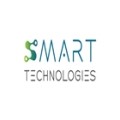


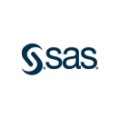





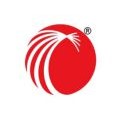

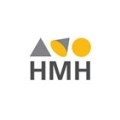


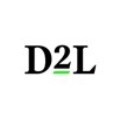
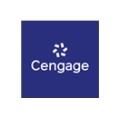

Contact Us
Here are GAO Tek’s Nitrogen dioxide gas detectors and they are further organized by feature:
Alarm-enabled, Benchtop, Sensor-based, Data logging, Explosion-proof, Handheld, High precision, Laser-based, Outdoor, Rugged and Wireless.
If you have any questions about our products or want to place an order, our technical experts can help you.
Please fill out this form or email us.
